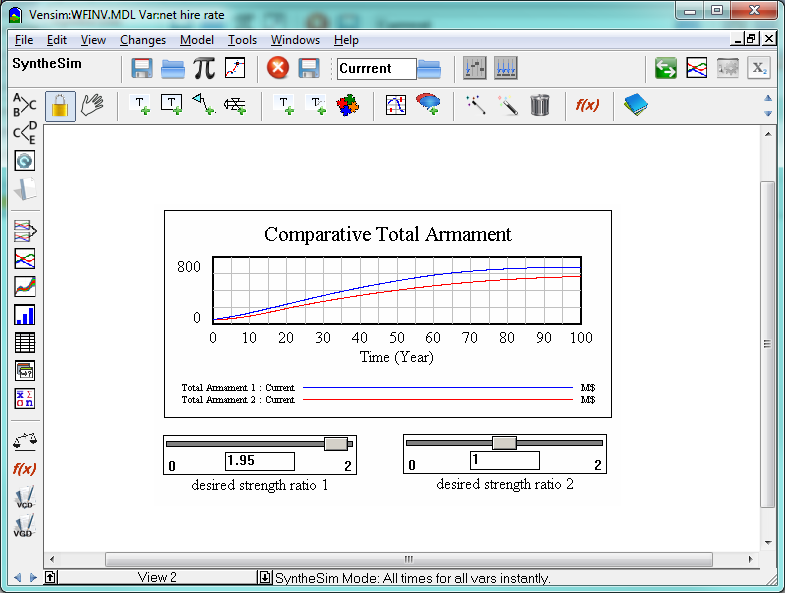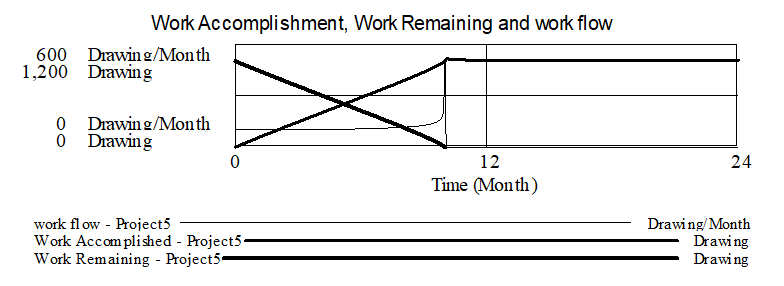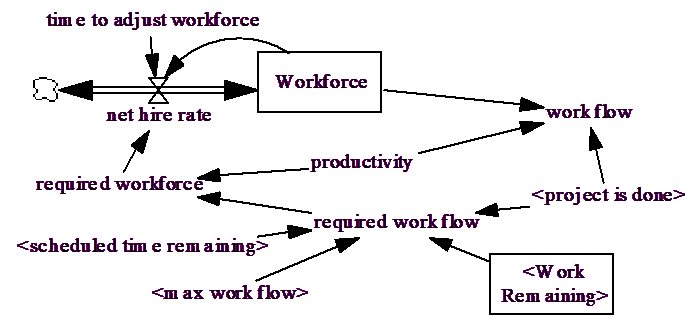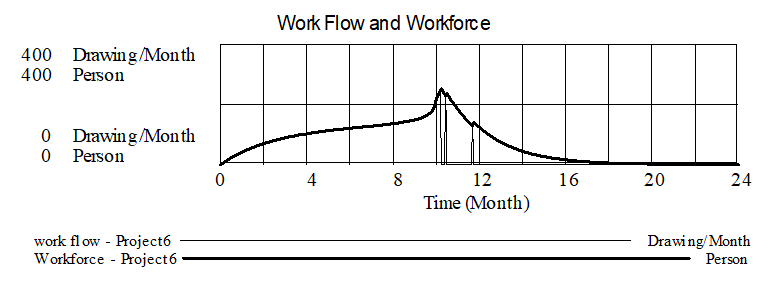![]()
The Merge tool class contains only a single member. It allows you to merge together two model variables into a single model variable. This provides a convenient mechanism for combining similar concepts that have arisen from pasting together different models, or for other reasons.
Suppose that you want to replace Urban Population with Population. To use the Merge tool first select it, and then move to Population (the variable you want to replace Urban Population with). Drag Population until the mouse pointer is on top of Urban Population then release the mouse button. You will receive the message:

Answer yes. All variables using Urban Population will now use Population instead. The variable Urban Population will be removed from the model.
The Merge tool is very useful when pasting models together because the sector linkages will often be renamed during the replication operation. For example suppose you have two models. The first computes crowding:

using population as an exogenous input and the second computes population.

If you replicate the second into the first you get:

Now we have population and population 0 in the view and we really want to keep population 0, but name it population. Click on the Merge tool, drag population 0 on top of population, answering yes to the prompt. Then reposition population 0 where it was before, then click on a Variable tool and rename population 0 to population. You will have:

For this example, if you had replicated the crowding model into the population model, there would have been no need for the extra effort. However, in general you can expect most partial models to both compute and require variables in other sectors. There is likely to be a better order to merge models in, but some amount of adjustment will almost always be required.
Splitting Arrows
Splitting arrows can be useful when you want to add an intermediate concept between two variables. This can be done with the Merge tool by dragging the handle of the arrow you want to split onto the new intermediate word. The direct connection previously made by the arrow will be removed and replaced by a connection through the word you moved (two arrows).
For example suppose that you have:

Click on the Merge tool, and then drag the handle in the middle of the arrow over morale. When you release the mouse button, the arrow from overtime to productivity is split as below:

Replacing Clouds
If you use the Merge tool and drag a variable onto a cloud, the variable will replace the cloud and any rates coming into the could will come into the variable. This is a convenient way to add an additional Level to a chain of flows.
Naming Rates
If you have an unnamed valve and you would like to attach an existing variable to that valve, you can do so with the Merge tool. Simply drag the variable on top of the valve.
Splitting Valves and Variables
If you hold down the Shift key with the Merge tool selected it will act as a splitting tool and this will reflected in the shape of the cursor  . If you grab and drag a variable with a splitting cursor, a shadow variable will be created for that variable. If you grab a valve that is attached to a word and drag it the valve and word will be split apart, with arrows added in order not to change the causal structure of the model.
. If you grab and drag a variable with a splitting cursor, a shadow variable will be created for that variable. If you grab a valve that is attached to a word and drag it the valve and word will be split apart, with arrows added in order not to change the causal structure of the model.